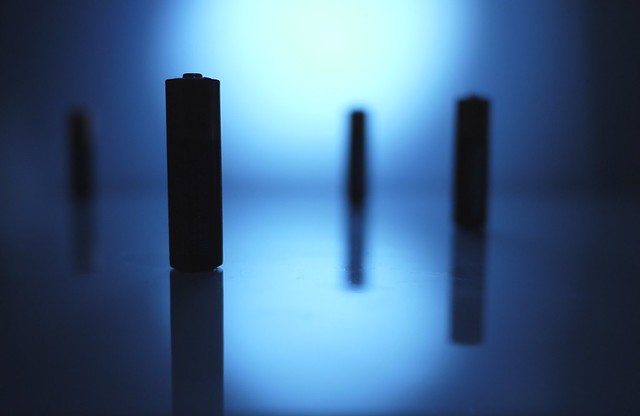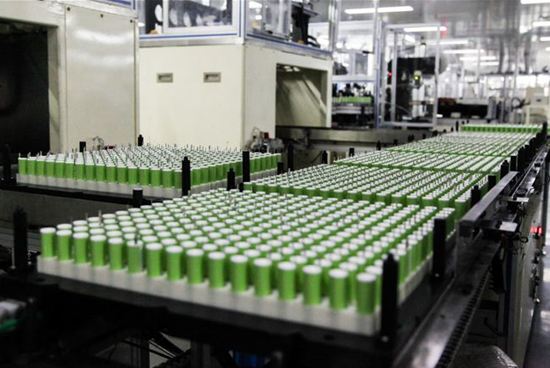How To Prevent Lithium Battery Cut Off Voltage?
Aug 08, 2019 Pageview:2913
Introduction to Lithium Battery Cut Off Voltage
The normal voltage for a lithium battery is 3.6v. However, some manufacturers make it higher than that to boost the watt per hour on paper.
Different batteries, depending on the chemistry and design of your lithium battery, have a different cut off voltage. They may be sold at different normal voltage, for example, most lithium voltages are either 3.7v or 4.2v; meaning that the highest voltage of the cell that you can get is either 3.7v or 4.2v, nothing higher. As the battery is used, the voltage will begin to drop lower and lower, once the voltage gets to 3.4v, the battery is dead, and at 3.0v the cut-off circuitry disconnects the battery.
Lithium battery cut off voltage is considered to be the voltage at which the battery is fully discharged and discharging the battery any further than this point is considered to be dangerous to the battery.
Protection Circuit of Lithium Battery Cut Off Voltage
When a battery becomes low, leaving it in that discharged state puts your battery at a high risk of remaining entirely discharged. In this discharged state, the current going to the protection circuitry also discharges the battery.
Also, if your battery gets discharged beyond the standard end-of-discharge voltage, the performance of your battery reduces and, in turn, shortens its life cycle, causing it to stop working totally. But, if you set the lockout voltage to a very high point, your battery won’t be able to meet its maximum capacity.
The low battery mode is enabled in lithium-ion battery products which makes the product, for example, a mobile phone, to automatically power off and at this point even if the battery is not being charged for a month or so the protection circuitry will not have drawn too much voltage. Hence, not over draining the battery that might have caused the battery to be damaged.
A protection circuit uses currents below 4.5μA. Hence, the time it takes for a lithium-ion battery to get to the end-of-discharge voltage increases drastically at this low current. Also, the time of self-discharge is quicker for some other protection circuitries that use high currents. Plus, if the battery gets self-discharged lower than the recommended limit, you can’t recover the capacity loss.
When the lockout voltage is set at 3.0V, the protection circuit is usually built for a lithium-ion battery that is single-celled. This voltage which is set by the ratio of R1 and R2 is then sensed at node A. And, if the battery voltage goes below the lockout voltage, node A drops below the threshold and goes to node B.
How to Protect Lithium Battery Cut Off Voltage Properly
The next question is, how do you properly protect your lithium-ion battery cut-off voltage so that you don’t lose your battery completely?
· Keep your batteries at room temperature
Room temperature is between 20 and 25 degrees Celsius. One of the worst thing that can happen to a lithium battery is to have a full charge and be subjected to heat or elevated temperatures. So it is advisable not to leave or charge your mobile device’s battery in your car if the temperature is hot. Heat is by far the largest threat when it comes to reducing lithium battery life.
· Get a high-capacity lithium-ion battery, instead of carrying a spare
Contrary to popular belief, batteries actually deteriorate over time, does not actually matter if they’re being used or not. For this reason, a spare battery won’t last much longer than the one in use. It’s also important to note the aging characteristic when purchasing batteries. Make sure you ask for the ones with the most recent manufacturing date rather the ones that have been on the shelf for a long time.
· Allow for partial discharges and avoid full ones all the time
Lithium batteries, unlike other types of batteries, do not have a charge memory. This means full discharge cycles are not required. In truth, it’s actually better if the battery uses partial-discharge cycles.
However, there happen to be one exception to that rule because of battery experts that advice?that after 30 charges, one should endeavor to allow a lithium battery to discharge completely. This is because a condition known as digital memory can occur if there is continuous partial discharge. At this point, the device’s power gauge accuracy starts to reduce.
So, you are advised to let the battery discharge to the cut-off point and then recharge. The power gauge will then be recalibrated thereby making it effective
· Avoid completely discharging lithium batteries
When lithium batteries are drained below 2.5v per cell, the safety circuit built in the battery then opens, and this makes the battery appear to be dead. At this stage, the original charger will be of no use, and only a battery analyzer with a boosting function has a chance of recharging the battery or bringing the battery back to life or so to say.
Due to safety reasons, it is advisable not to recharge a deeply discharged lithium battery when they have been abandoned or left for months.
· Proper storage of lithium batteries
Having a spare battery is not actually a bad idea, most people have extra batteries for their notebooks and mobile devices, but the truth is it can never last as long as the original battery. Most people don’t know the reason behind this, but it’s because the spare batteries are being stored while they are fully charged. This is because oxidation of lithium-ion is at its highest rate during storage. The proper way to store a lithium battery is at 40 percent charged and in a cool place, preferably the refrigerator.
Wrapping It Up
Lithium batteries are actually an improvement over the old type of battery and preventing them from getting to the cut off voltage is relatively easier than that of other batteries as long as one follows the above-listed directive one should be safe.
- Prev Article: Tell Me More About 18650 Charge Time
- Next Article: What is the lithium battery minimum voltage?
Leave Message
Hottest Categories
-
Hottest Industry News
-
Latest Industry News











